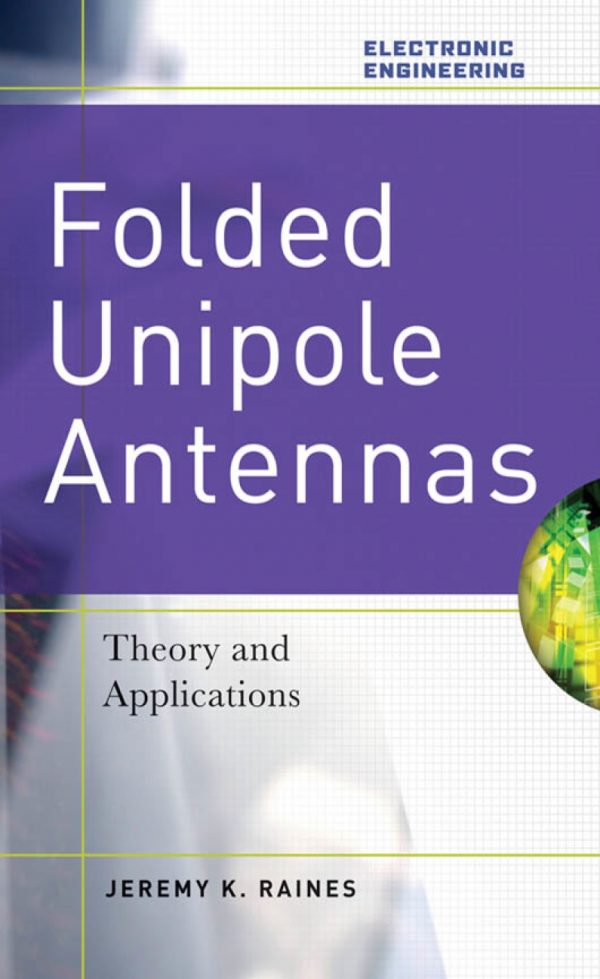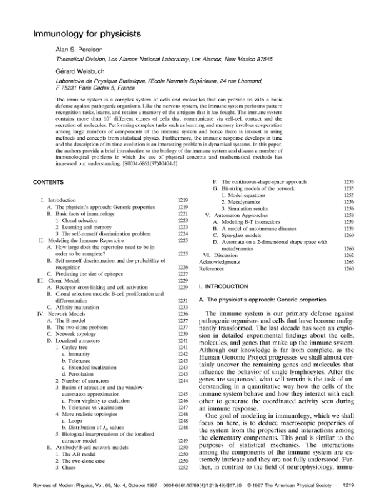Brady West, Kathleen B. Welch, Andrzej T Galecki9781584884804, 1584884800
The authors introduce basic theoretical concepts, present a heuristic approach to fitting LMMs based on both general and hierarchical model specifications, develop the model-building process step-by-step, and demonstrate the estimation, testing, and interpretation of fixed-effect parameters and covariance parameters associated with random effects. These concepts are illustrated through examples using real-world data sets that enable comparisons of model fitting options and results across the software procedures. The book also gives an overview of important options and features available in each procedure.
Making popular software procedures for fitting LMMs easy-to-use, this valuable resource shows how to perform LMM analyses and provides a clear explanation of mixed modeling techniques and theories.
Table of contents :
Linear Mixed Models: A Practical Guide Using Statistical Software……Page 1
Dedication……Page 3
Preface……Page 4
Authors……Page 5
Acknowledgments……Page 6
Contents……Page 7
1.1 What Are Linear Mixed Models ( LMMs)?……Page 14
1.1.2 Models for Longitudinal or Repeated- Measures Data……Page 15
1.1.3 The Purpose of this Book……Page 16
1.1.4 Outline of Book Contents……Page 17
1.2.1 Key Theoretical Developments……Page 18
1.2.2 Key Software Developments……Page 20
2.1.1.1 Clustered Data vs. Repeated- Measures and Longitudinal Data……Page 21
2.1.1.2 Levels of Data……Page 22
2.1.2 Types of Factors and their Related Effects in an LMM……Page 23
2.1.2.3 Fixed Factors vs. Random Factors……Page 24
2.1.2.5 Nested vs. Crossed Factors and their Corresponding Effects……Page 25
2.2.1 General Specification for an Individual Observation……Page 27
2.2.2 General Matrix Specification……Page 28
2.2.2.1 Covariance Structures for the D Matrix……Page 31
2.2.2.2 Covariance Structures for the Ri Matrix……Page 32
2.2.3 Alternative Matrix Specification for All Subjects……Page 33
2.3.1 Specification of the Marginal Model……Page 34
2.3.2 The Marginal Model Implied by an LMM……Page 35
2.4.1 Maximum Likelihood (ML) Estimation……Page 37
2.4.1.1 Special Case: Assume is Known……Page 38
2.4.1.2 General Case: Assume is Unknown……Page 39
2.4.3 REML vs. ML Estimation……Page 40
2.5.1 Algorithms for Likelihood Function Optimization……Page 42
2.5.2 Computational Problems with Estimation of Covariance Parameters……Page 43
2.6 Tools for Model Selection……Page 45
2.6.2 Likelihood Ratio Tests ( LRTs)……Page 46
2.6.2.2 Likelihood Ratio Tests for Covariance Parameters……Page 47
2.6.3 Alternative Tests……Page 48
2.6.3.1 Alternative Tests for Fixed- Effect Parameters……Page 49
2.6.4 Information Criteria……Page 50
2.7.1 The Top- Down Strategy……Page 51
2.7.2 The Step- Up Strategy……Page 52
2.8.1.1 Conditional Residuals……Page 53
2.8.2 Influence Diagnostics……Page 54
2.9.1 Predicting Random Effects: Best Linear Unbiased Predictors……Page 55
2.9.2 Intraclass Correlation Coefficients ( ICCs)……Page 57
Example 1: A linear model with an intercept and a gender factor ( Model E1)……Page 58
2.9.4 Missing Data……Page 60
2.10 Chapter Summary……Page 61
Example 2: An LMM with aliased covariance parameters ( Model E2)……Page 59
3.2.1 Study Description……Page 63
3.2.2 Data Summary……Page 66
3.3.1 Analysis Steps……Page 70
3.3.2.1 General Model Specification……Page 72
3.3.2.2 Hierarchical Model Specification……Page 74
3.3.3 Hypothesis Tests……Page 75
3.4.1 SAS……Page 78
3.4.2 SPSS……Page 86
3.4.3 R……Page 89
3.4.4 Stata……Page 94
3.4.5.1 Data Set Preparation……Page 97
3.4.5.2 Preparing the Multivariate Data Matrix ( MDM) File……Page 98
3.5.2 Likelihood Ratio Tests for Residual Variance……Page 102
3.5.3 F-tests and Likelihood Ratio Tests for Fixed Effects……Page 103
3.6.1 Comparing Model 3.1 Results……Page 104
3.6.2 Comparing Model 3.2B Results……Page 106
3.6.3 Comparing Model 3.3 Results……Page 107
3.7.1 Fixed- Effect Parameter Estimates……Page 108
3.7.2 Covariance Parameter Estimates……Page 109
3.8 Estimating the Intraclass Correlation Coefficients ( ICCs)……Page 110
3.9.1 Litter- Specific ( Conditional) Predicted Values……Page 112
3.9.2 Population- Averaged ( Unconditional) Predicted Values……Page 113
3.10.1.1 Conditional Residuals……Page 114
3.10.1.2 Conditional Studentized Residuals……Page 116
3.10.2.1 Overall and Fixed- Effects Influence Diagnostics……Page 118
3.10.2.2 Influence on Covariance Parameters……Page 119
3.11.1 Data Structure……Page 120
3.11.5 Differences in Model Fit Criteria……Page 121
3.11.6 Differences in Tests for Fixed Effects……Page 122
3.11.7 Post- Hoc Comparisons of LS Means ( Estimated Marginal Means)……Page 123
3.11.11 Reference Categories for Fixed Factors……Page 124
4.1 Introduction……Page 126
4.2.1 Study Description……Page 128
4.2.2 Data Summary……Page 129
4.2.2.2 Preparing the Multivariate Data Matrix ( MDM) File……Page 130
4.3 Overview of the Classroom Data Analysis……Page 132
4.3.1 Analysis Steps……Page 133
4.3.2.1 General Model Specification……Page 136
4.3.2.2 Hierarchical Model Specification……Page 137
4.3.3 Hypothesis Tests……Page 139
4.4.1 SAS……Page 141
4.4.2 SPSS……Page 147
4.4.3 R……Page 152
4.4.4 Stata……Page 155
4.4.5 HLM……Page 158
4.5.1 Likelihood Ratio Test for Random Effects……Page 164
4.5.2 Likelihood Ratio Tests and t-Tests for Fixed Effects……Page 165
4.6.1 Comparing Model 4.1 Results……Page 166
4.6.2 Comparing Model 4.2 Results……Page 167
4.6.3 Comparing Model 4.3 Results……Page 168
4.7.1 Fixed- Effect Parameter Estimates……Page 170
4.7.2 Covariance Parameter Estimates……Page 172
4.8 Estimating the Intraclass Correlation Coefficients ( ICCs)……Page 173
4.9.1 Conditional and Marginal Predicted Values……Page 176
4.9.2 Plotting Predicted Values Using HLM……Page 177
4.10.1 Plots of the EBLUPs……Page 178
4.10.2 Residual Diagnostics……Page 180
4.11.3 Calculation of Degrees of Freedom for t-Tests in HLM……Page 182
4.11.4 Analyzing Cases with Complete Data……Page 183
4.11.5 Miscellaneous Differences……Page 184
5.1 Introduction……Page 186
5.2.1 Study Description……Page 187
5.2.2 Data Summary……Page 189
5.3.1 Analysis Steps……Page 191
5.3.2.1 General Model Specification……Page 193
5.3.2.2 Hierarchical Model Specification……Page 195
5.3.3 Hypothesis Tests……Page 196
5.4.1 SAS……Page 198
5.4.2 SPSS……Page 201
5.4.3 R……Page 204
5.4.4 Stata……Page 206
5.4.5.1 Data Set Preparation……Page 209
5.4.5.2 Preparing the MDM File……Page 210
5.5.2 Likelihood Ratio Tests for Residual Variance……Page 214
5.6.1 Comparing Model 5.1 Results……Page 215
5.6.2 Comparing Model 5.2 Results……Page 217
5.7.1 Fixed- Effect Parameter Estimates……Page 218
5.8 The Implied Marginal Variance- Covariance Matrix for the Final Model……Page 220
5.9 Diagnostics for the Final Model……Page 222
5.11.1 Kronecker Product for More Flexible Residual Covariance Structures……Page 225
5.11.2 Fitting the Marginal Model……Page 227
5.11.3 Repeated- Measures ANOVA……Page 228
6.1 Introduction……Page 230
6.2.1 Study Description……Page 231
6.2.2 Data Summary……Page 232
6.3 Overview of the Autism Data Analysis……Page 236
6.3.1 Analysis Steps……Page 237
6.3.2.1 General Model Specification……Page 238
6.3.2.2 Hierarchical Model Specification……Page 240
6.3.3 Hypothesis Tests……Page 241
6.4.1 SAS……Page 243
6.4.2 SPSS……Page 247
6.4.3 R……Page 251
6.4.4 Stata……Page 254
6.4.5.2 Preparing the MDM File……Page 257
6.5.1 Likelihood Ratio Test for Random Effects……Page 262
6.5.2 Likelihood Ratio Tests for Fixed Effects……Page 263
6.6.3 Comparing Model 6.3 Results……Page 264
6.7 Interpreting Parameter Estimates in the Final Model……Page 265
6.7.1 Fixed- Effect Parameter Estimates……Page 267
6.7.2 Covariance Parameter Estimates……Page 268
6.8.1 Marginal Predicted Values……Page 270
6.8.2 Conditional Predicted Values……Page 272
6.9.1 Residual Diagnostics……Page 274
6.9.2 Diagnostics for the Random Effects……Page 276
6.9.3 Observed and Predicted Values……Page 277
6.11 An Alternative Approach: Fitting the Marginal Model with an Unstructured Covariance Matrix……Page 279
7.1 Introduction……Page 284
7.2.1 Study Description……Page 285
7.2.2 Data Summary……Page 286
7.3 Overview of the Dental Veneer Data Analysis……Page 290
7.3.1 Analysis Steps……Page 291
7.3.2.1 General Model Specification……Page 293
7.3.2.2 Hierarchical Model Specification……Page 295
7.3.3 Hypothesis Tests……Page 296
7.4.1 SAS……Page 298
7.4.2 SPSS……Page 304
7.4.3 R……Page 307
7.4.4 Stata……Page 311
7.4.5.2 Preparing the Multivariate Data Matrix ( MDM) File……Page 315
7.5.1 Likelihood Ratio Tests for Random Effects……Page 320
7.6.1 Comparing Model 7.1 Results……Page 321
7.6.2 Comparing Software Results for Model 7.2A, Model 7.2B, and Model 7.2C……Page 323
7.6.3 Comparing Model 7.3 Results……Page 325
7.7.1 Fixed- Effect Parameter Estimates……Page 326
7.7.2 Covariance Parameter Estimates……Page 327
7.8 The Implied Marginal Variance- Covariance Matrix for the Final Model……Page 328
7.9.1 Residual Diagnostics……Page 330
7.9.2 Diagnostics for the Random Effects……Page 332
7.10.1 ML vs. REML Estimation……Page 334
7.10.4 Aliasing of Covariance Parameters……Page 335
7.10.6 Miscellaneous Software Notes……Page 336
7.11.1 Modeling the Covariance Structure……Page 337
7.11.3 Alternative Uses of Baseline Values for the Dependent Variable……Page 338
A. 1.3 R……Page 340
A. 2 Useful Internet Links……Page 341
Appendix B Calculation of the Marginal Variance-Covariance Matrix……Page 343
Appendix C Acronyms / Abbreviations……Page 345
References……Page 346







Reviews
There are no reviews yet.